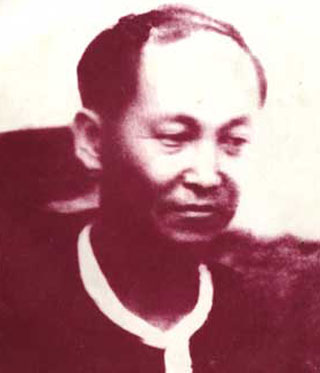Sixty one years after Burmese General Aung San's assassination opinion is still divided among ethnic Kachin leaders on autonomy arrived at by Gen. Aung San before Burma's independence. July 19 marked 61st year of the general's assassination.
Dr. Manam Tu Ja, the Kachin Independence Organization's (KIO) Vice-president No. 2, Head of Political Consultative Committee and former KIO delegate to Burma's ruling junta's National Convention said, “After Aung San's assassination, the U Nu led Anti-fascist People’s Freedom League (AFPFL) redrafted the country's constitution as a unitary or centralized system which was opposite to Aung San's promise of genuine federal union for hill tribes. Unlike General Aung San's promise, autonomy of all hill tribes was neglected by Prime Minister U Nu led AFPFL government after Burma was given independence by the British on 4 January, 1948.”
“If General Aung San was not assassinated, I think the country would have headed for a genuine federal union including autonomy of ethnic Kachins in keeping with General Aung San's promise to ethnic Kachins, Shans and Chin hill tribes,” Dr. Tu Ja told KNG.
Maran Di La, chairman of Kachin Refugee Committee (KRC) based in Malaysia said, "In my opinion, Burman leader General Aung San just came and organized ethnic Kachins during Burma's independence together with Kachins and Burmans. This was cheating and he wanted to depress the Kachins and all Burma’s hill tribes with Burmanization."
But, Ma Tu, a modern Kachin political study said, “The death of Aung San directly led to a loss of the cause for ethnic Kachin's autonomy because Kachin leaders signed a concrete agreement only with General Aung San. If Aung San was alive, the autonomy of Kachins was partly or fully guaranteed in the constitution as Aung San had promised.”
88 generations Kachin students' leader Awng Wa said, “The question, 'Would Kachins get autonomy, if General Aung San was alive?' had arisen after Aung San's assassination. It is uncertain that Kachins would have got autonomy whether Aung San was alive or dead. This is because the 1947 constitution was similar to the constitutions of former Union of Soviet Socialist Republics (USSR) and Yugoslavia ruled by dictators.”
Duwa Bawmwang Laraw, vice-chairman of Thailand-based Ethnic Nationalities Council (ENC) and, chairman of Kachin National Council (KNC) and Kachin National Organization (KNO) warned, “If Burmans want ethnic Kachins as well as all other Burma's ethnic nationalities in a union, the country's constitution must be drafted based on equal rights and identity. If it is not so, secession would be better.”
Agreement between General Aung San and Kachin leaders before Burma's independence
Before the Panglong Agreement was signed between ethnic Kachins, Chins and Shan leaders and Burman leader General Aung San on 12 February, 1947, Kachin leaders met General Aung San separately twice in Myitkyina Township, the capital of Kachin State in 1946.

During the meeting from November 28 to December 1 in 1946 in a school in Manhkring village in Myitkyina, about 30 Kachin hill rulers (Bum Du or Duwa) in Bhamo and Myitkyina districts met General Aung San.
Major agreements on the issues were:
1. Kachin territories must be ruled by Kachins themselves.
2. Burmans must not rule Kachins.
3. Kachin hill areas can be ruled under any system by Kachins.
4. Union level economy, security and foreign diplomacy sectors must be governed by the Union Administrative Council formed by Kachin leaders and representatives.
5. Practice their-own religion freely.
6. All Kachin hill areas must be ruled by Kachin Duwas.
The agreement was crucial for a Burman leader Gen. Aung San before he made second or final journey to England on Burma’s independence issues. Gen. Aung San’s first journey was failed because he demanded Burma’s independence without consensus of hill tribes--- Kachin, Chin and Shan.
Kachin struggle for secession
After Kachins and Burmans got independence from the British on 4 January, 1948, Kachins felt the autonomy was degrading and armed struggle began. The political-wing of the Kachin Independence Organization (KIO) and the armed-wing Kachin Independence Army (KIA) were officially formed on 5 February, 1961 demanding secession by Kachins.
Following the situations in the world and neighbouring counties, KIO/A changed its secessionist policy into one of autonomy as a state in the Union of Burma from 1976 to now. It even it signed a ceasefire agreement with Burma's ruling junta in 1994.
At the moment, the KIO/A have clearly declared that it will support till the end the junta's seven-step roadmap for disciplined-democracy in the country.
However, KIO/A leaders said, they will solve the political problems by political means through a meaningful dialogue on the table between the KIO/KIA and military rulers of Burma for Kachin State's autonomy.


